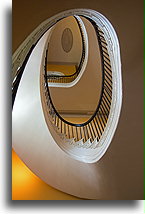Charleston
Aug 19, 2017
During the colonial period, Charleston was one of the largest seaports and cities in North America. Nearby plantations fueled the economy, trade, and drove high demand for the labor force. Thousands of Africans had been brought and sold here. Until slavery was abolished, this town had a majority-enslaved population. In Charleston, the slave-ownership was the marker of social status, and even free people of color typically kept slaves.




Nathaniel Russell was shipping merchant. He moved to Charlestown, South Carolina in 1765. His business became so prosperous that he was one of the wealthiest people in town. Russells' Neoclassical house in downtown Charleston is an important landmark today. From the outside, the building is uninteresting, but the interior hides the most magnificent furniture of its era. In the lobby, dining room and other rooms that were accessible to guests, the Russells displayed the most expensive items, in order to make impression on the visitors. However, bedrooms and other private rooms were filled with the second-hand items and furniture. For Nathaniel Russell, it was not worth investing in things that were not intended for show.
The most spectacular in the whole house is cantilevered spiral staircase. Steps winding three floors in a continuous curve form an architectural marvel. This an unusual design where walls around do not support the structure. Each lower step in the staircase simply supports the step above.









